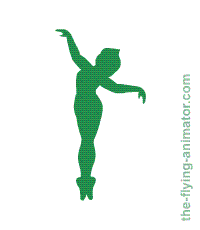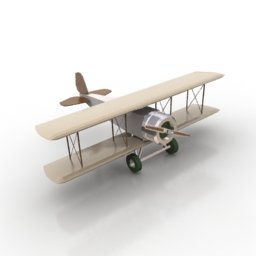Explore Different Types of Animation
At the broadest sense, there are 3 types of animation:
2D, 3D and Stop Motion
Any way to manipulate a sequence of images, frame by frame, is considered a Type of Animation.
Animations usually fall into one of these three categories - 2D, 3D or Stopmotion.
The boundaries between them are, however, blending with great speed.
For an in-depth discussion of some types and techniques of animation follow these links:
- Animation Techniques
- How does computer animation work?
- What is Pixilation?
- Cut Out Animation Rages Through The Ages
2D animation
The term "2D" refers to animation that is created using two dimensional drawings.
Classic hand drawn animation is the main example for this type.
Think Disney features, like the recent Princess and the Frog.
You might also remember this from Sesame street - a piece by a wonderful animator - Paul Fierlinger:
Computer assisted animation
Flash or AfterEffects cut-out animation is also considered 2D.
Many TV series are done in Flash.
 Flash Cut Out Animation
Flash Cut Out Animation3D animation
 Computer Generated Image of a model airplane
Computer Generated Image of a model airplane"3D" refers to Computer Generated Images (CGI) that create the illusion of three dimensional space with great accuracy.
Films like Toy Story and Up are 3D - CGI animation.
Computer special effects also fall within this category. All the magical creatures and powerful spells in Harry Potter are done this way.
We should bear in mind though, that in the end, 3D animation is also just a sequence of flat, two dimensional images projected on the screen.
How does computer animation work? Click to find out!
Stereoscopic 3D, such as in "Avatar", is the combination of two slightly different images that create the spatial effect, just like our own eyes do in the real world. It is not a type of animation though, but rather a type of projection, like DVD, or a flip book.
Stop Motion Types of animation
Everything that is shot live, frame by frame, in front or under a camera is called Stop Motion or "Stop Frame" Animation.
Clay animations are usually the first thing that comes to mind in this category.
The different stop motion types obviously looks very three dimensional, the same way video looks three dimensional, but the term "3D" is reserved for computer animation only.
Some physical special effects (big parts of the original Star Wars trilogy) are done in stop motion. Stop-motion has a special and powerful appeal of its own; the reality of the objects on screen enhances our expectations of them.
Pixilation is the most direct use of this power - animating real, live humans.
These three broad categories are hopelessly intertwined by now, thanks to the aid of computers that we use for, well, everything.
It is very common to find animations that are a combination of all three.
There is one other qualification that is not formal, that's how I perceive it, personally:
Cartoons vs Animation
The name "cartoon" seems to have stuck to the funnier, wackier side of animation, to Bugs Bunny and the Road Runner.
I wouldn't call Pocahontas a "cartoon", it just doesn't sound right.
I don't know, maybe it's just me.
Anyway, many types of animation often get their name from the way in which they're made.
Here you will find a comprehensive list of Animation Techniques.
Generic Terms used as names of Types of Animation:
Web Animation
A general name for the types of small animations that illustrate or decorate websites.
Usually Gif or Flash, you find these on blogs, in forums, in MySpace, avatars that web surfers use, animated logos, banners that promote just about anything.
Well, It MOVES, you know?
Jab Animation

The name of an online animation site where you can upload you photo and insert yourself into a funny pre-existing animation.
This seems to be turning into a generic name for this kind of web application.
Cinematic and Animated Storyboards
Also called animatik, animatique, or videoboards.
These are rudimentary forms of a movie, which serve as a pre-production tool for complicated projects. They are used for planning both live action and animation projects, from commercials to feature films.
The more complex the production, the more detailed the animatik will be.
Good and detailed planning saves a lot of cash later!
VJ Animations
A visual experience that accompanies the music in clubs, concerts, weddings and so on.
Usually abstract graphics that run in loops, but occasionally you can come across more complex creations.
Experimental Animation
How about his one - Post-It Animation!
Animators use the colorful post-it squares as pixels, arrange them on a wall and animate them around.
This sort of imaginative use of an ordinary object is the heart of Experimental Animation.
You see, you really CAN animate practically anything - food, furniture, pin screens, beads, chalk marks on black board, people, puppets, mixed techniques, layered images, earth, plastic, wool - ANYTHING!
It's usually students who have the time, hunger and curiosity to play around and invent a new type of animation.
These works rarely reach the cinema; most of them are short films of no more than a few minutes. The places to see them are Animation Festivals and on Youtube and Vimeo.
There IS support for this type of R&D in the animation world.
The National Film Board of Canada is home to some of the most interesting things ever done - and it is a governmental fund! You can watch short animated films on their website.
European countries also support the art, especially France.
Most of these works are not commercial, but hey - not that long ago, computer animation was "experimental" also.
Read more about Animation:
Animation History - Cut out animation rages through the ages
How does computer animation work?
Articles
How Does computer Animation Work
Character Design - A Stroll with Famous Felines
Making Animation
Recording Voice Talents for Animation
How to Draw A Cat Tutorial - step by step!
